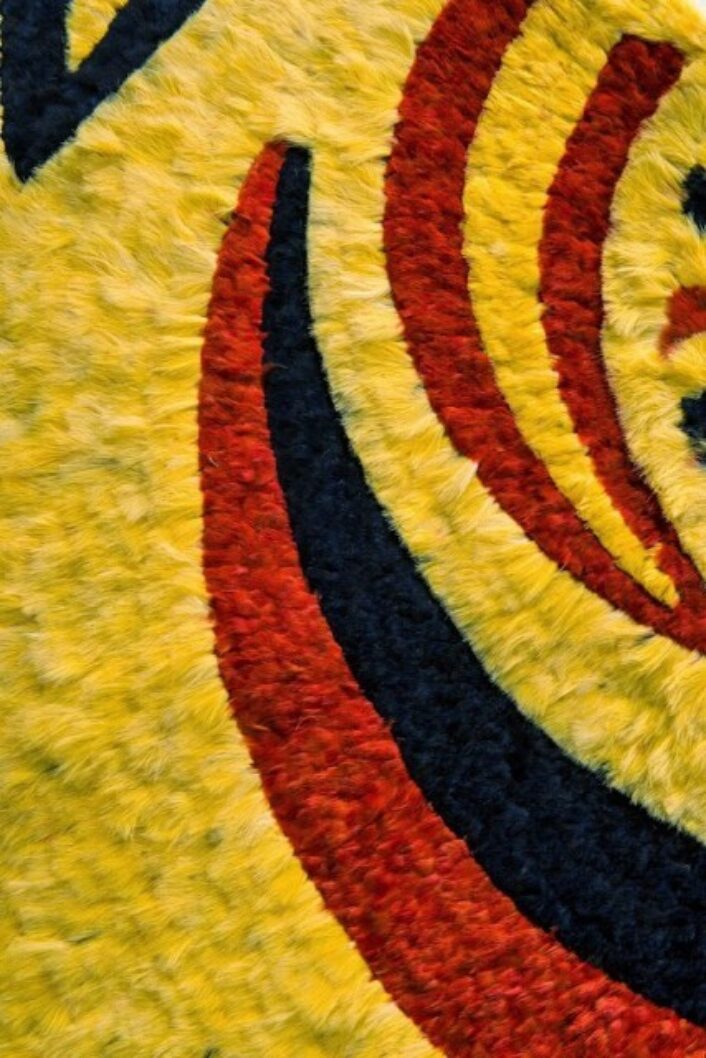
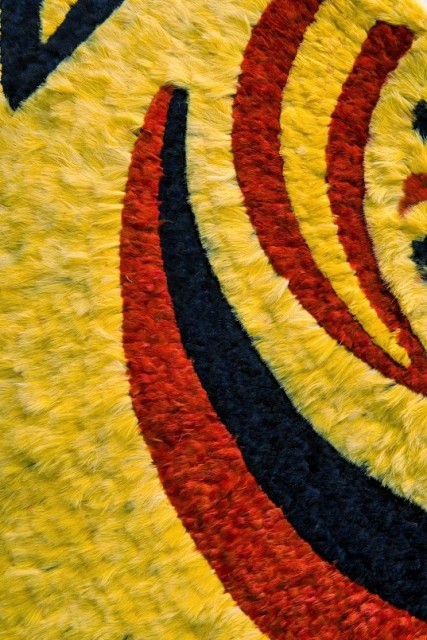
‘Ahu ‘ula (cape and detail), pre-1861. Yellow and black ‘ō ‘ō (Moho nobilis) feathers, red ‘i‘iwi (Vestiaria coccinea) feathers, and olonā (Touchardia latifolia) fiber. Bernice Pauahi Bishop Museum, Ethnology Collection, 09670/1909.007.
All images courtesy of the De Young Museum and photographed by Hal Lum and Masayo Suzuki.
San Francisco’s de Young Museum has mounted an ambitious new exhibition, Royal Hawaiian Featherworks: Nā Hulu Ali‘i. Featuring more than 75 rare, feathered capes, staffs and cloaks, the regalia worn by Hawaiian chiefs speak of spiritual protection and cultural meaning deep within the native culture.
Most displayed items are heirlooms from Honolulu’s Bernice Pauahi Bishop Museum. Handcrafted of plan fiber and rare feathers from endemic birds of the islands, the cloaks (‘ahu’ula) and capes provided spiritual protection to Hawaiian chiefs, proclaiming their identity and status. During the 19th century when these garments were made, these feathered artifacts were essential elements of Hawaiian culture as European settlements began their first interactions with the natives.
Once it closes at the de Young Museum in February, 2016, this exhibition will tour widely. We think that this show is vital to understanding the traditions and history of Hawaiian native culture. It’s definitely worth a look!
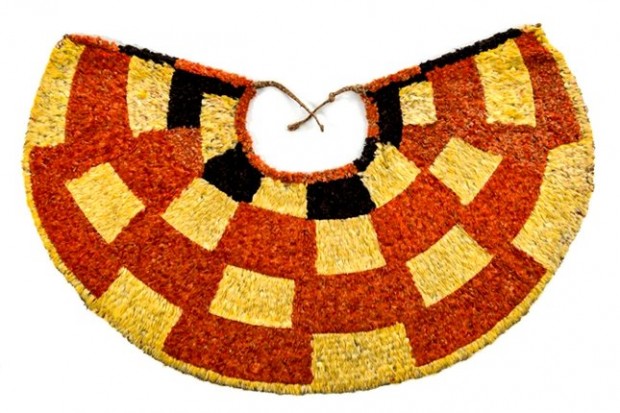
From the 18th or early 19th century, this cape incorporates red Vestiaria coccinea feathers, yellow and black Moho sp. feathers, and Touchardia latifolia fiber.
Image courtesy of: Mercury News, photographed by: Hal Lum and Masayo Suzuki
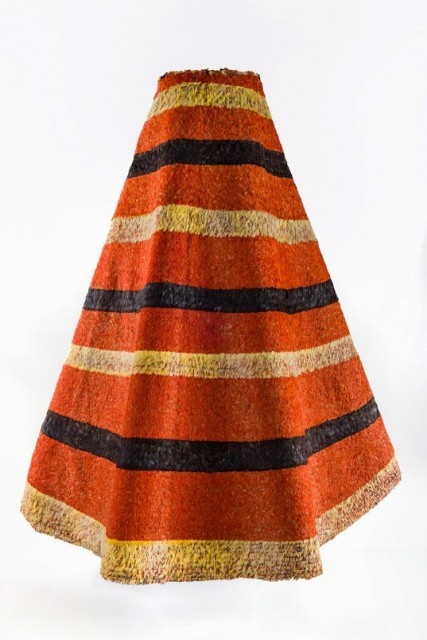
Ahu ‘ula (cloak), pre-1825. Red ‘i‘iwi (Vestiaria coccinea) feathers, yellow and black ‘ō‘ō (Moho sp.) feathers, and olonā (Touchardia latifolia) fiber.
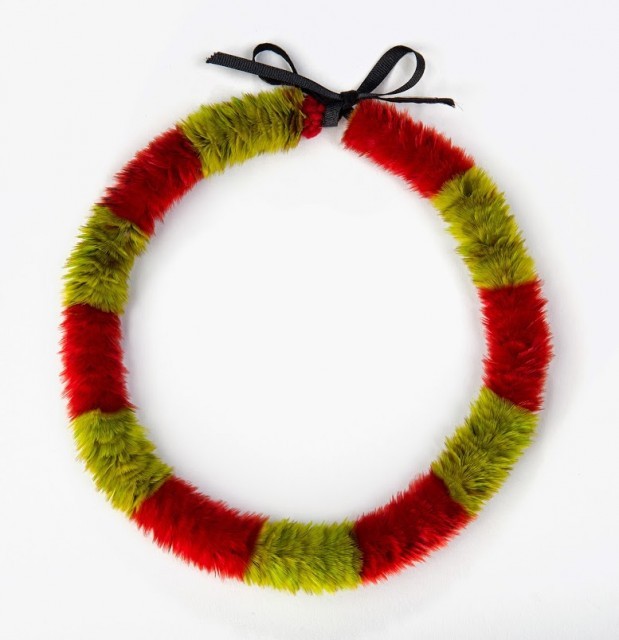
Lei hulu (feather lei), 19th century. Yellow ‘ō‘ō (Moho sp.) feathers, red and green Kuhl’s lorikeet (Vini kuhlii) feathers, and black ribbon.
